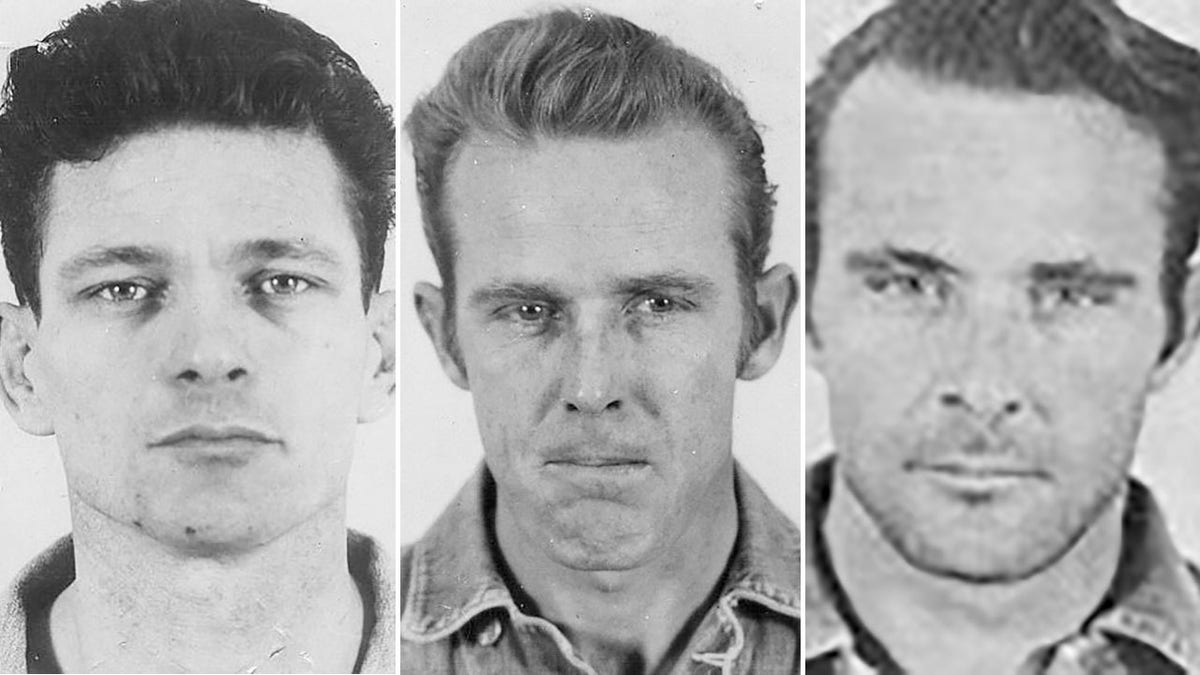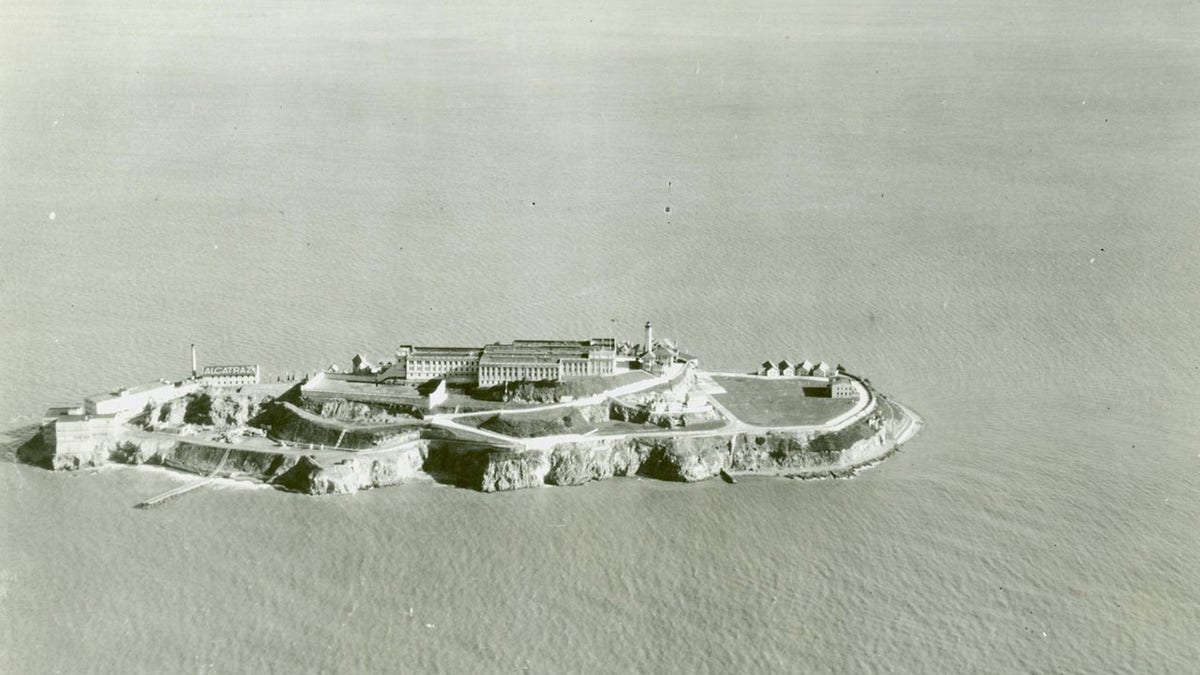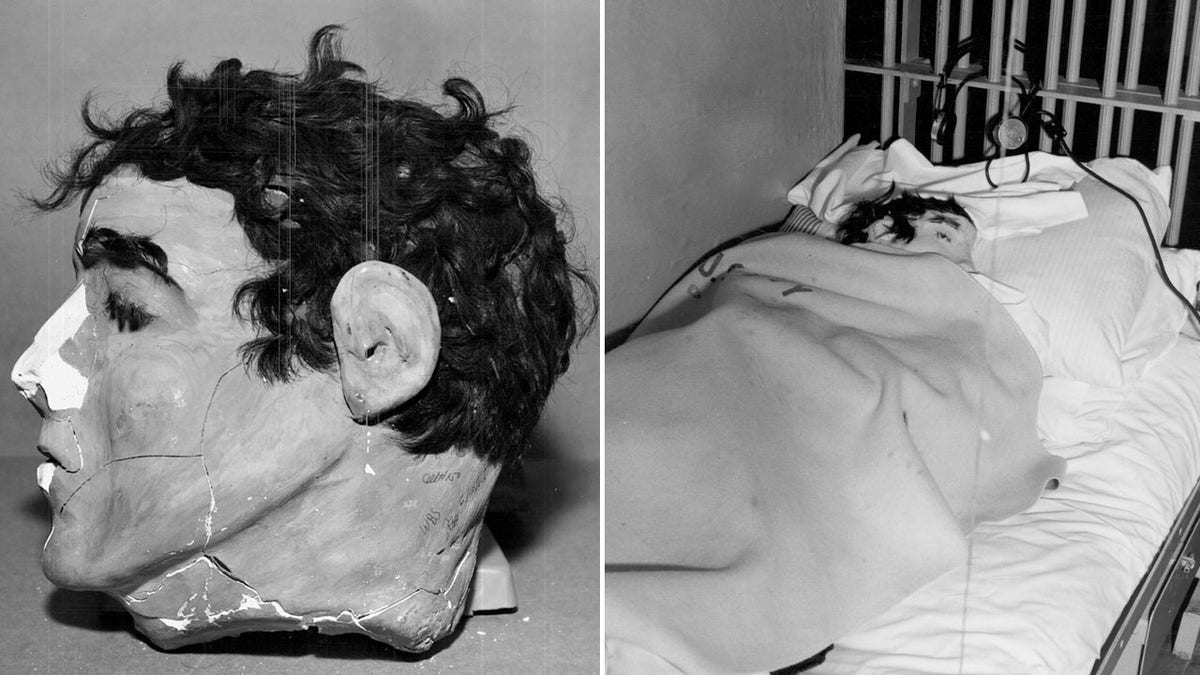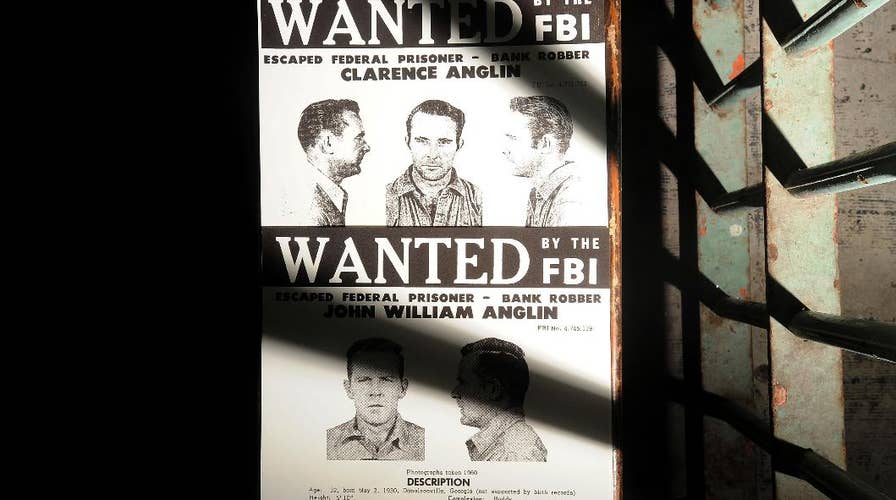Alcatraz inmate mystery solved? New letter suggests successful escape
Three Alcatraz prison inmates escaped in 1962 without a trace and thought to be dead. Now a new letter emerged, allegedly written by one of the prisoners, reveals new details about the escape and their survival.
The island prison Alcatraz, which was dubbed the “ultimate maximum security prison” during its time, was supposed to be an inescapable stockade that held America’s most incorrigible public enemies, a reputation left shattered one summer night in 1962 by three men – if the story holds true.
Bank robbers Frank Morris and brothers John and Clarence Anglin were serving their sentences on the solitary island known as “The Rock,” situated in the middle of San Francisco Bay, when they hatched what some recognize as the most ingenious prison break in American history.
3 ALCATRAZ INMATES SURVIVED 1962 ESCAPE, SWAM TO LAND, LETTER SUGGESTS
While the case remains open, some federal officials say the men drowned during the escape and the cold, choppy waters of the Pacific swept their bodies away. But their bodies were never recovered.

Frank Morris, pictured left, John Anglin, center, and Clarence Anglin are officially listed as missing and presumed drowned even though their bodies have never been recovered. (FBI)
Without solid proof that Morris and the Anglin brothers did, in fact, die before ever reaching the shores of California, swirling conspiracy theories have spawned to fill in the blanks.
Read on to learn more about the escape from Alcatraz and the biggest conspiracy theories surrounding this American mystery.
What was Alcatraz?
The Alcatraz Federal Penitentiary was a maximum-security prison on Alcatraz Island, located just over a mile off the coast of San Francisco, Calif. It had held military captives during the Civil War but was re-fortified in the 1930s to combat the major crime wave of the early twentieth century. This modern iteration was operational for nearly 30 years, from Aug. 11, 1934, to March 21, 1963.

Alcatraz was thought to be an inescapable prison. Other notable inmates included Al Capone, Robert Stroud, the so-called "Birdman of Alcatraz," and George "Machine-Gun" Kelly. (FBI)
Despite its isolated location and tough security measures, which included fortified iron bars, strategically placed guard towers and guards performing at least a dozen strict inmate checks per day, the federal reports say 36 men tried 14 separate escapes. Nearly all of the attempts ended with the inmates’ recapture or death.
That changed on June 11, 1962, when Morris and the Anglin brothers executed their clever plan.
The 'Hollywood' Escape
During the routine cell check the following morning, guards discovered Morris, John and Clarence were not in their beds. In their place were dummy heads crafted from plaster, flesh-toned paint and real human hair – a clever arts-and-crafts project that apparently tricked the night guards, according to the FBI.
AMAZING ALCATRAZ DISCOVERY: LASERS REVEAL LONG-HIDDEN MILITARY TUNNEL AND FORTIFICATIONS
Investigators were initially dumbfounded but began to piece the plan together over the course of the next several days as they discovered more evidence.

The trio crafted paper mache heads out of plaster, flesh-colored paint and real human hair to fool the guards on the night of their escape. (FBI)
The escape plan was set in motion six months earlier when the trio began using makeshift tools to remove a section of wall in the back of their cells under the guards' noses, investigators have said. They concealed their work using false walls, suitcases and cardboard.
Once through, the trio was able to access an unguarded utility corridor located behind the cells and climbed to the roof of their cellblock, where they set up a secret workshop to proceed to the next step of their plan: fastening more than 50 raincoats together to form life jackets and a 6-foot by 14-foot rubber raft.
They also crafted wooden paddles and converted a musical instrument into an air pump to inflate the raft, according to the investigation.

Investigators found makeshift wooden paddles they believed the trio used during their escape off the island. (FBI)
When they were finally ready to execute the plan, the men accessed the corridor, got their gear and climbed onto the prison roof through a ventilator. They then slid down the smokestack from the on-site bakery, climbed a fence and made for the northeast shore where they launched the raft.
The escape, which the Federal Bureau of Prisons bestowed with the name “Hollywood,” was turned into the 1979 movie “Escape from Alcatraz,” starring Clint Eastwood as Morris.
Several weeks after the escape, a body in blue clothing similar to a prison uniform was found washed ashore near San Francisco. It could not be identified, and the trio has been officially listed as missing and presumed drowned ever since, officials have said.
While investigators believe the men died shortly after stepping foot into the cold waters that separated the prison and San Francisco, their bodies were never recovered.
Conspiracy Theories
The biggest conspiracy theory surrounding the fate of the inmates is that the trio survived the daring escape. But in the half-century since they vanished, other theories have attempted to solve where the men went into hiding and their activities since.

The FBI says the area at the lower right is believed to be the way the inmates went to launch their raft. (FBI)
The Letter
The latest development concerns a letter that emerged in January 2018. It was purportedly written by John Anglin and contained an admission of escape and an explanation of the inmates' fate.
“My name is John Anglin,” the letter reads. “I escape (sic) from Alcatraz in June 1962 with my brother Clarence and Frank Morris. I’m 83 years old and in bad shape. I have cancer. Yes we all made it that night but barely.”
The letter continued, “If you announce on TV that I will be promised to first go to jail for no more than a year and get medical attention, I will write back to let you know exactly where I am. This is no joke.”

Investigators released a rendered image in 2014 of what John Anglin might have looked like at age 84 alongside his mugshot photo from 1960. (U.S. Marshals Service / FBI)
It went on to say that Clarence died in 2008 and Morris died in 2005.
CBS San Francisco reported that it obtained the letter from an unnamed source.
The report said the letter had been sent to the San Francisco Police Department’s Richmond station and handed over to the FBI in 2013. The FBI tested the letter in 2013 for fingerprints but reportedly said results were inconclusive. The letter had been kept from the public for five years.
Gifts for Mom
U.S. Marshal Michael Dyke, who inherited the unsolved case in 2003, told The Associated Press in 2012 that he didn’t know whether any members of the trio were still alive. But he had seen enough evidence to make him wonder.
That evidence included credible reports that the Anglins’ mother, for several years, received flowers delivered without a card, and that the brothers attended her 1973 funeral disguised in women’s clothes despite a heavy FBI presence.

Investigators released a rendered image in 2014 of what Clarence Anglin might have looked like at age 84 alongside his mugshot photo from 1960. (U.S. Marshals Service / FBI)
The Brazil Photo
An alleged photo of the Anglin brothers hiding out in Brazil about 13 years after they vanished was shown during a special on The History Channel that aired in 2015.
A friend of the Anglins, Fred Brizzi, claimed to have run into the brothers in Rio de Janeiro in the 1970s and took the photo, according to the special. It was not until 1992 that he gave the photo to the Anglin family, who then turned the photo over to a retired U.S. Marshal investigator in 2015.
But Dyke told Fresno station KFSN-TV in 2016 that Brizzi was a known conman, and an expert working for the Marshals believed the photo was not legitimate. Despite his doubts, Dyke had continued to investigate the photo as a lead in the case.
The Deathbed Confession
In 2016, investigators were looking into a purported deathbed confession a man gave to his nurse, which claimed that he and an accomplice helped the trio escape from Alcatraz.
Sources who have reportedly seen the document told KFSN that two men were waiting on a white boat in the bay, picked up the escapees as they paddled toward shore and brought them up the coast to Seattle.

Investigators released a rendered image in 2014 of what Frank Morris might have looked like at age 88 alongside his mugshot photo from 1960. (U.S. Marshals Service / FBI)
The detail coincides with a report filed the day after the escape by now-retired San Francisco cop Robert Checchi. He detailed how he was off-duty when he spotted a white boat on the bay with its lights off in the marina the same night of the prison break. It appeared empty, but later flashed a spotlight on the water and disappeared into the night.
Checchi told the station that the FBI interrogated him over why he did not immediately report the boat.
IN LETTERS, WHITEY BULGER FONDLY RECALLED OLD DAYS, ALCATRAZ
In the confession, the dying man went on to say that it wasn’t long after the escape that he murdered the trio and buried their bodies near a highway, according to the outlet.
Author and Alcatraz scholar Michael Esslinger told the station that he and a former federal investigator went to the scene, but could not find any bodies.
Where the investigation stands today
The FBI closed the case in 1979 and handed over the lead to the U.S. Marshals Service, which has carried on the investigation in case the trio is still alive.
In 2014, the Marshals released age-progressed photos of what the men could like in their old age.
CLICK HERE FOR THE FOX NEWS APP
If the 2013 letter and deathbed confession are not to be believed, and all the men are surviving to this day, Morris would be 94 years old and John and Clarence would be 90 and 89.
Fox News’ Edmund DeMarche and The Associated Press contributed to this report.









































